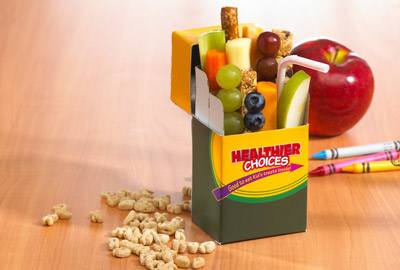
The role of nutrition in children’s health is becoming better known, but some people are still new to the concept of nutrition’s effect on the brain.
Good nutrition is essential to the proper development and growth of children’s brains. Thus, what you give them for their school lunch may ultimately affect their grades.
Energy Food
Food is energy. Children who eat a nutritious lunch have more energy to get through the afternoon. Junk food simply makes a person feel sluggish and even ill, whether that person is young or old. If your child feels “blah” in the afternoon, he or she simply isn’t going to do as well at school. Packing a high-protein lunch with whole grains included will help your child feel full longer and give him or her plenty of energy to get through the afternoon.
Mental Clarity
Having healthy food for lunch helps improve mental clarity. Packing a lunch without artificial colors and flavors and with lots of whole grains and fresh vegetables and fruit can help with managing ADD and ADHD symptoms. Avoid sugary drinks (straight juice in containers included) and white flour products. Instead of a high-fat, high-sugar dessert, pack some whole wheat peanut butter cookies or homemade oatmeal cookies. White flour and sugar tend to cause a “crash” in the afternoon, and artificial flavors and colors have been linked to ADD and ADHD symptoms in children.
Brain Development
Foods that contain a lot of essential fatty acids (Omega-3s, for example) support a child’s developing brain. Foods like avocado, tahini (sesame seed spread), nuts, hummus (with olive oil), and fish are truly brain foods.
Here are some tips for getting your kids to eat the healthy lunch you packed.
* Let them participate. Look at the food pyramid together, or let them choose from a variety of healthy options. If possible, let them grow some of their own food in container gardens or a conventional garden plot. Even if all they grow are some herbs in the kitchen window, kids are more enthusiastic about eating foods they’ve helped grow.
* Choose fun, interesting containers and food presentation. Bento boxes are popular with some parents and kids. Bento food is arranged in fun and pretty patterns. You can cut whole grain bread and cheese slices into fun shapes with cookie cutters, arrange fruit and cheese in pretty flower patterns, or build little “people” out of melon cubes, fruit, and cheese.
* Put a healthy twist on old favorites. There is a world of difference between a peanut butter and jelly sandwich made with no-sugar-added, natural peanut butter, low-sugar jelly, and whole grain bread and one made with white, processed bread, sugary peanut butter, and full-sugar jelly. Try other nut butters, too, and try using fresh fruit (such as sliced strawberries or bananas) with the peanut butter instead of jelly.
Children’s grades and school performance really are affected by the foods they eat.

